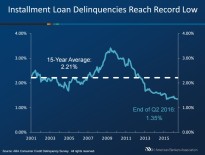As one of the most heavily regulated industries in America, it’s natural that bankers and regulators might not always have the happiest of relationships, but a new Aite Group report aims to shed some light on how banks’ relationship with the new cop on the beat may be a little more fraught than others.
Senior Analyst Shirley Inscoe’s paper, “CFPB: Impact on Financial Institution Fraud Departments,” highlights a few key areas of difference between the CFPB and other banking regulators. Bankers she interviewed for the report told her that CFPB examiners seemed to spend as much time working offsite as they did onsite, that the bureau required much more data than other regulators and that the examination process was generally less transparent and communicative than those of other regulators.
Inscoe wants to be clear that she’s not bashing the CFPB in her report.
“I didn’t want this report to be anti-CFPB,” she told Banker & Tradesman. “They have a role to play and while there can be philosophical differences, it’s an important role.”
But as a former compliance manager herself, Inscoe thinks that banks, consumers and regulators all benefit when bankers enjoy open and collaborative relationships with their regulators.
“I know personally when I was in that role I had a very close dialogue with the OCC,” she said. “We talked regularly, and if I had questions, I felt comfortable going to them and talking to them and making sure we were abiding by the spirit of the regulation and not just the letter of the law.”
Chris Cole, executive vice president and senior regulatory counsel at the Independent Community Bankers of America, said that he’s heard similar complaints about the bureau and commented that many community banks intentionally stay below the $10 billion asset threshold so as to avoid direct examination by the CFPB.
Of course, while banks under $10 billion aren’t directly regulated by the CFPB, the bureau does write the rules for everybody, and smaller banks do watch what the bureau is doing. Those who work with community banks say it’s not uncommon for banks of all sizes to cultivate happy and healthy relationships with their respective regulators.
“I have several clients who have a collaborative relationship with regulatory agencies and are in touch with them other than those times when they’re being formally examined. They’re being proactive in keeping them informed,” said Kenneth Ehrlich, a partner at Nutter McLennan & Fish and co-chair of the firm’s banking and financial services practice.
In Ehrlich’s work with banks under $10 billion in assets, he said that complaints about technical interpretations of various consumer compliance regulations are far more common over the past few years than issues with the CFPB more generally.
A Holistic Approach To Compliance
While Stephen King, a member of Wolf & Co. and director of the firm’s regulatory compliance services, works with banks that are not directly subject to CFPB examinations, he still described some recent trends in the world of bank compliance. In particular, he noted an increasing demand for expertise in specific compliance areas as banks embed compliance staff into each of their business units.
“What that’s translating to is a lot of institutions are beefing up compliance staffing in key compliance areas, like residential lending, BSA, even in commercial lending,” he said. “It’s not a compliance person from the compliance department, but it’s someone whose sole job is to analyze that department’s compliance.”
He also described a shift in the industry toward a “three lines of defense” approach to compliance. It helps to picture this in terms of three concentric circles. The first line of defense is the compliance staff embedded within individual business units, testing processes and procedures within that specific division. The second line of defense, general compliance staff, broaden that focus a little bit and validate and test the work of the first line of defense. The third line of defense, King said, is the audit functionality, which takes a holistic look at both the individual business units and the compliance department.
King also said the industry has undergone a philosophical shift in its approach to compliance, moving from a bottom-up approach to a top-down approach.
“In the past it was all about, ‘What do we need to pass?’” he said. “What banks are doing now with [enterprise risk management] is analyzing, ‘What are we doing and why are we doing this?’ The exam now is almost catching up with that: you’re doing this to run a more effective and more efficient bank. We want to run a more effective and more efficient exam.”
More broadly, Ehrlich has a suggestion for bankers looking to survive a regulatory exam: “No. 1, run a good bank,” he said. “Run a good ship. Be transparent. Be cooperative, professional and reasonable, and it’s unlikely you’ll have any trouble.”
That doesn’t mean that even the best-behaved banks haven’t occasionally encountered an examiner with an apparent axe to grind, but Ehrlich said this is fortunately rare.
“That’s unfortunate, but it can happen even to the best prepared bank,” he said. “The world’s not a perfect place, so occasionally, you will get some strange treatment from an examination team, but it’s pretty rare.”




 |
| 



